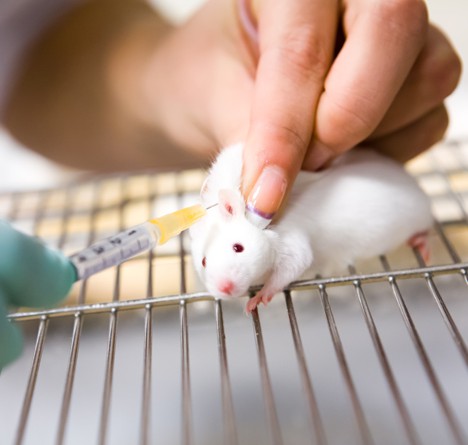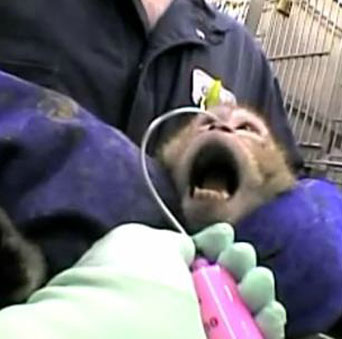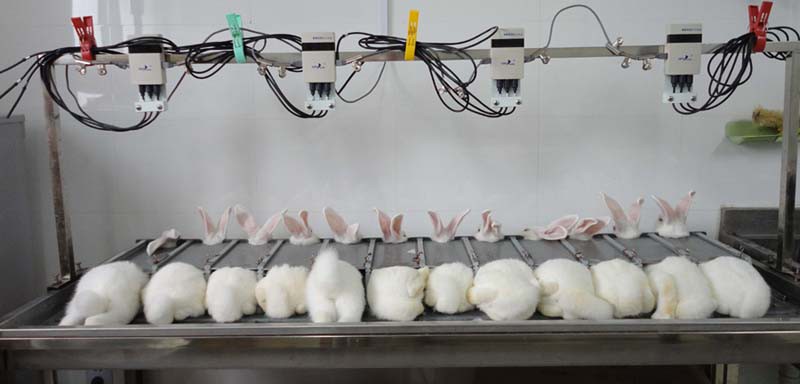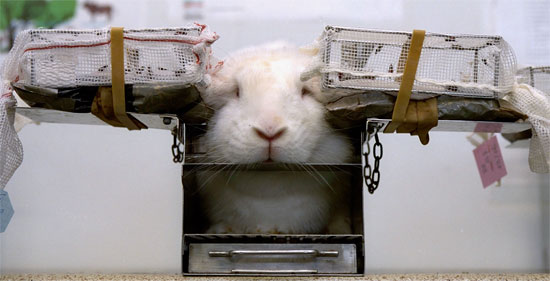Large numbers of animals are routinely used to test cosmetics, drugs and other pharmaceutical products. These studies involve a number of tests, outlined below.
Metabolic Tests
Metabolic tests are performed in an effort to determine how drugs are absorbed, metabolized and excreted by the body when introduced orally, intravenously, intraperitoneally or intramuscularly.
Toxicology Tests
Acute toxicity is studied by using a rising dose until signs of toxicity (i.e. poisoning) become apparent. Sub-acute toxicity is where a drug is forced upon animals for four to six weeks in doses below the level at which it becomes toxic, with the goal of observing the effects of the build up of toxic metabolites. Animals used for testing chronic toxicity may be subjected to this for up to two years. The data gathered from this period is used to calculate the maximum tolerable dose (i.e. where signs of toxicity/poisoning begin to occur).
Efficacy Studies
The aim of efficacy studies is to test the way experimental drugs work by inducing illness in animals using an animal model of the disease. The drug being tested is then administered in a randomized trial. These tests are intended to help determine the effect of the drug and dose response curve.
Cosmetic Testing
Using animals in the development of cosmetics involves testing a finished product (for example, shampoo) or testing individual ingredients or a combination of them.
Cosmetic testing is often sub-contracted to third-party corporations or even third-party corporations in countries where animal testing has not yet been banned.
Some cosmetic companies claim that their products are not tested on animals, despite using third-party corporations.
All of these experiments are extremely cruel, unnecessary and potentially dangerous to human health. Non-human animals have different biological structures and physiology than humans. An animal’s response to a drug can be similar or different to a human’s, and it is impossible to extrapolate what the reaction will be in a human being. For example, morphine calms humans but excites cats, cortisone causes birth defects in mice but not in humans, penicillin kills guinea pigs and hamsters and aspirin poisons cats. If the results of tests on animals had been relied upon, we would not have penicillin or digitalis (a drug used by heart patients, but which was withheld from the market for years because it was found to raise blood pressure in dogs). We would also be without aspirin (which causes fetal deformities in rats and is toxic to some animals) and chloroform (once a common anesthetic but not used initially because it was toxic to dogs). Certain steroids, adrenaline, insulin and some antibiotics are also toxic to many animals, but medically beneficial to humans.
WHAT YOU CAN DO
Buy household products and cosmetics not tested on animals: Click here for a list of Cruelty Free Companies.
PHOTO GALLERY: ANIMAL TESTING







